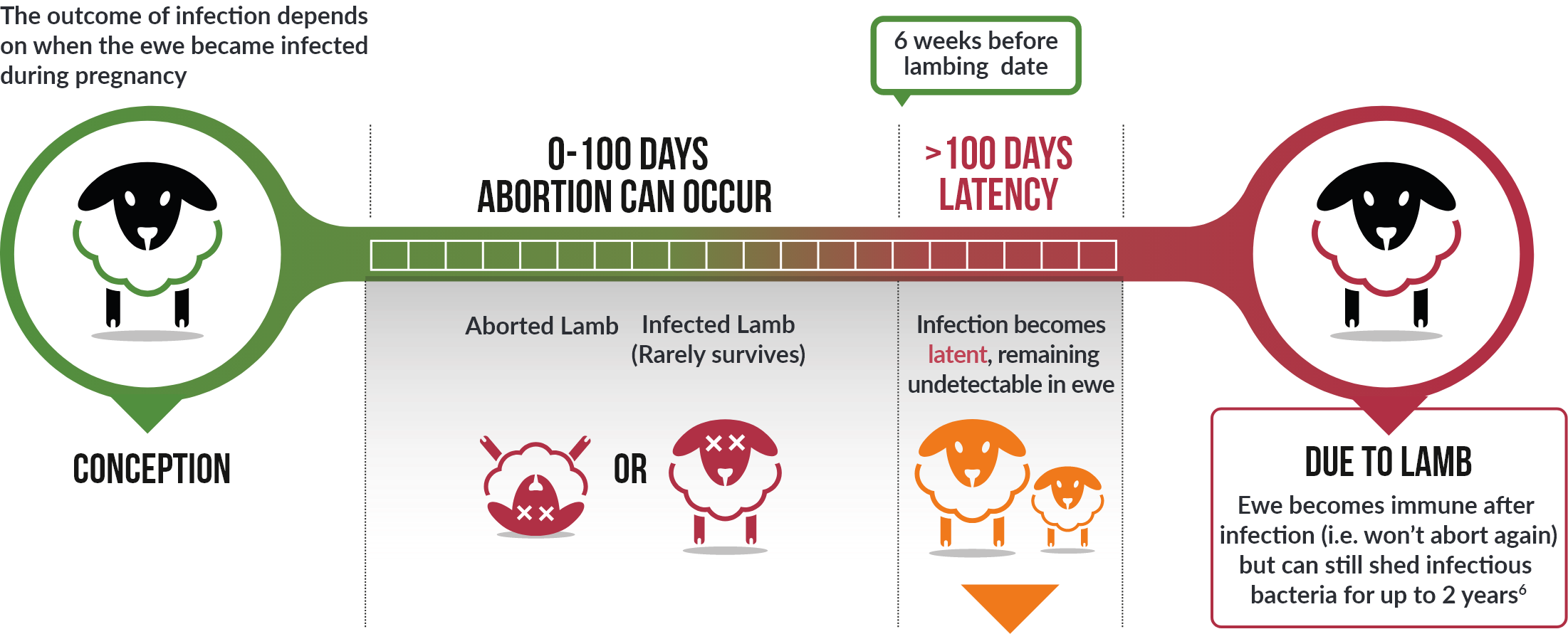EAE – what’s the risk?
Enzootic abortion (EAE), caused by the bacteria Chlamydophila abortus, is the most commonly diagnosed cause of abortion in UK sheep1, costing the UK sheep industry up to £20 million annually2.
The impact of EAE
Lamb losses of up to 30% in
one season3
PLUS, the wasted cost of:
- Getting the ewes in lamb
- Supporting those pregnancies (feed, scanning)…
PLUS, the cost of the abortion itself:
- Clean up afterwards
- Carcass disposal
- Vet/disease investigation
- Treatment of ewes
PLUS the hassle and stress of dealing with
aborting ewes during lambing and the zoonotic risk to staff.
Take it from farmers who know…
“We had enzootic abortion 10 years ago and since then we have vaccinated. It’s as simple as that – there’s no chance we’re going through all that again”
“A neighbour got enzootic abortion and it was like a bad snowstorm – just kept getting worse and worse and all he could do was sit there and weather it”
“Why anyone wouldn’t protect themselves against this disease when ewes are at risk is beyond me!”
MOST FARMS ARE vulnerable

Even the strictest biosecurity cannot 100%
protect against the risk of EAE infection!
Enzootic abortion is a zoonotic disease, meaning that it is also contagious to humans and can cause flu-like symptoms.
It is especially dangerous for pregnant women as it can cause miscarriage. The bacteria can remain in the environment for weeks (and much longer in freezing conditions5), so pregnant women should avoid all contact with sheep, especially during lambing, but also with anything (e.g. clothing) that could have become contaminated.

A disease full of surprises
Enzootic abortion is not as straightforward as infection = disease:
PREGnANT EWE BECOMES INFECTED



What can EAE look like?
Because of its complicated disease process, the effects of enzootic abortion can appear in different ways:
| What is seen on farm? | What’s going on? | |
| Outbreaks - sudden and high number of abortions of up to 30%3 | Usually as a result of infection introduced to animals that have not been previously exposed, so have no immunity (naïve) | |
| ‘Outbreak’ following an outbreak the previous year (even despite vaccination) | Ewes that have latent infection from last year are now aborting (and becoming infectious to any naïve animals) | |
| Bought in ‘vaccinated’ animals aborting | These animals may have been vaccinated when they were already latently infected | |
| Moderate levels (above 2%) of ongoing abortions year on year | Can be as a result of multiple scenarios:
|
Vaccination is the best way to stop any nasty surprises from enzootic abortion.
Abortion rates of 2% or more suggest an infectious cause, create grumbling, ongoing financial losses and could represent a ticking timebomb.



